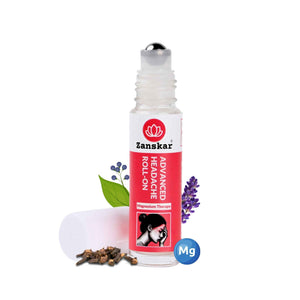
Ever suffered from headache originating from your neck? You may have Cervical Headaches.

Factors likely to increase incidence of cervicogenic headaches include:
- Neck injuries: Whiplash, falls, or any other type of injury to the neck can cause head pain.
- Poor posture: Sitting or standing hunched for an extended duration can strain the neck muscles and lead to headaches.
- Muscle tension: Stress and tension can cause the neck muscles to tighten, leading to a headache.
- Structural issues: Conditions such as joint pain, degenerative disc disease, or a herniated disc in the cervical spine can contribute. Tumors can also cause cervicogenic headaches.
- Referred pain: Pain from other body areas, such as the shoulders or upper back, can lead to referred head pain.
Symptoms
Cervicogenic headache symptoms can vary from person to person. Some common symptoms include:
- Head pain on only one side
- Pain that radiates from the neck to the head, forehead, temple, or behind the eyes
- Stiff neck
- Pain in the shoulders or upper back
- Limited range of motion in the neck
- Headaches triggered by neck movements or certain positions
- Headaches that worsen with specific activities, such as sitting at a computer or driving
- Numbness or tingling in the arms or hands
If you experience any symptoms, it is essential to consult a healthcare professional. An early diagnosis and treatment plan can help to prevent chronic pain and other complications.
How Long Can They Last?
The duration can vary from person to person. In some cases, they may last for a few hours, while in others, they can last for days to weeks. It may also depend on the underlying cause and the effectiveness of the treatment.
How is a cervicogenic headache diagnosed?
A healthcare provider will review your symptoms during a physical exam and offer testing to confirm a diagnosis.
It’s difficult to diagnose cervicogenic headaches due to referred pain. In addition, symptoms can easily be mistaken for other types of headaches, like tension headaches or migraines, for example.
Your provider will offer tests to rule out conditions with similar symptoms. The most common tests are imaging tests like an X-ray, CT scan or an MRI. These may pinpoint injuries or conditions that affect the cervical spine.
However, an unremarkable scan doesn’t always rule out a potential cervicogenic contribution to your headache. The reason for this, in part, is that the scan only looks at structure and not function or mobility and range of movement.
Treatment Options for Cervicogenic Headaches
The treatment for cervicogenic headaches depends on the underlying cause and severity of the condition. Here are some standard treatment options:
Over-the-counter pain relievers offer temporary relief. You can also apply Zanskar Advanced Headache roll-on to your temple and forehead to promote muscle relaxation and get pain relief from these headaches.
2. Exercises
As a home remedy for treating a cervicogenic headache, exercises that target the neck muscles can be beneficial. Certain exercises can help improve their strength and flexibility, reducing headache frequency and severity.
Some recommended exercises include neck stretches, shoulder rolls, and chin tucks.
3. Physical Therapy
Physical therapy is often recommended for chronic headaches, especially when daily exercises at home are not working. Studies have shown that physical therapy dramatically reduces pain and improves outcomes for those with cervicogenic headaches.
A physical therapist can correct your technique and intervene with suitable exercises. These will help you improve your posture, neck muscles, and range of motion.
4. Spinal Manipulation
Spinal manipulation, or chiropractic adjustment, is typical for cervicogenic headaches.
In a small study of 28 patients with cervicogenic headaches, scientific findings reveal that spinal manipulation can cut down on pain-relieving medications by 36% and lower headache frequency by 69%.
Home Treatment
In addition to the options above, the following steps can help manage head and neck pain.
- Applying heat or ice to the neck.
- Practicing good posture.
- Taking breaks from activities that strain the neck, such as sitting at a computer.
- Using a supportive pillow while sleeping.
- Avoiding activities that trigger your headaches.
- Relaxation techniques, such as deep breathing, to reduce stress and tension in the neck muscles.
Outlook
Cervicogenic headaches can be a debilitating condition. Proper treatment and lifestyle changes can effectively manage, if not wholly correct, chronic headaches. If you experience symptoms, consult a healthcare professional for an accurate diagnosis and optimal treatment. With proper care, you can receive relief and improve your overall quality of life.
Learn More About Zanskar Health
If you have joint or muscle pain that makes it hard to move, Zanskar offers the most advanced full stack pain relief solutions for you.
Now available to purchase, Zanskar® Advanced Pain Care Products have a unique formulation of natural bioactive ingredients and provide lasting relief from all kinds of headache that you can feel good about.
Get your fix before stocks run out - buy now.
You can also gain access to therapeutic exercises and stretches for your condition by downloading the Zanskar Health physiotherapy mobile app. Additionally, you’ll have a personal care team to guide, support, and tailor our program to you, including behavioral and nutritional coaching.
Download our mobile app here 👉 download and track your exercise streak.
Medical Review: This article is written by Dr Nishtha Mittal (Senior Health Content Editor at Zanskar Health) and has been medically reviewed by the medical team at Zanskar Health. This article and its contents are provided for educational and informational purposes only and do not constitute medical advice or professional services specific to you or your medical condition.







